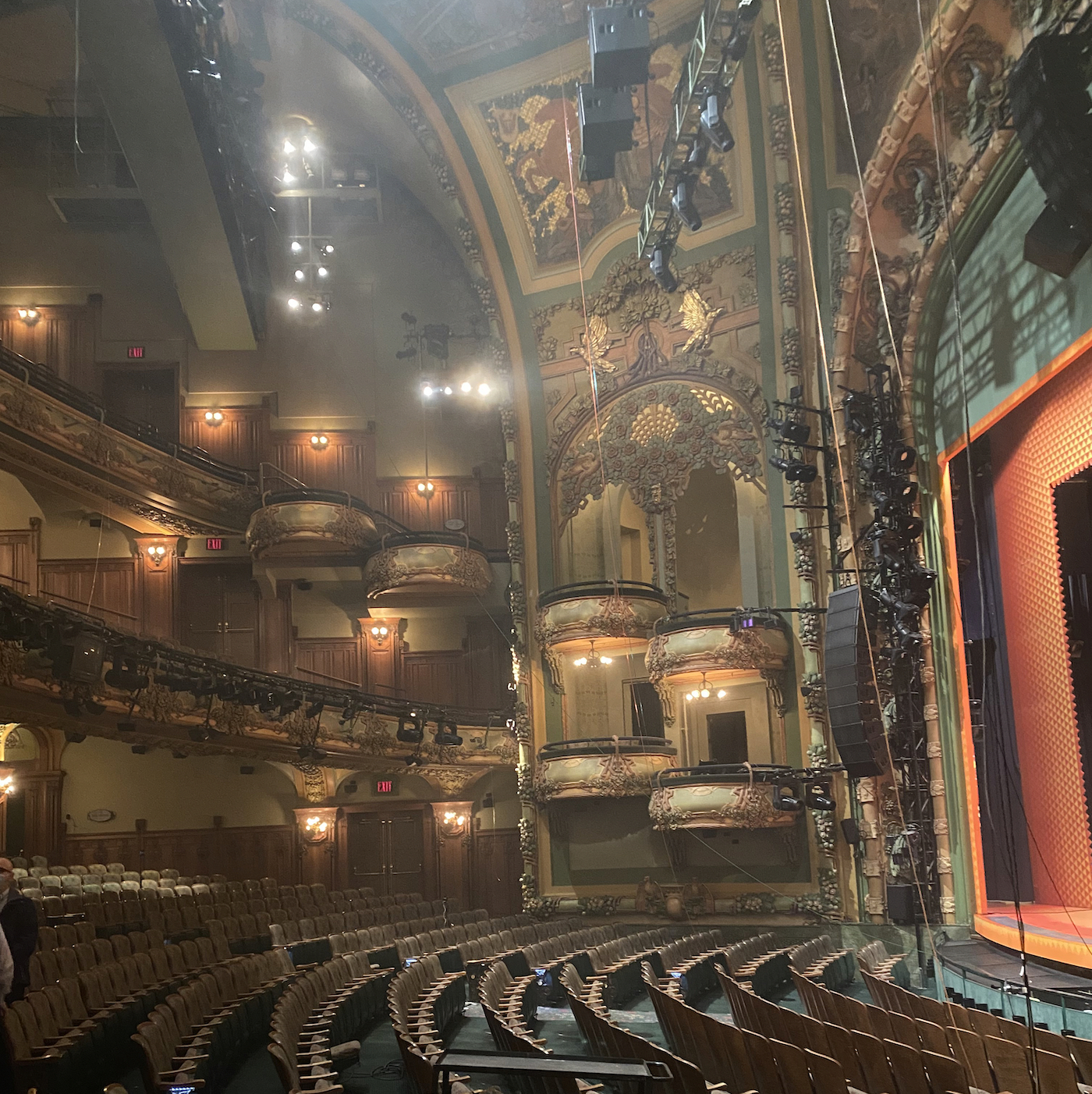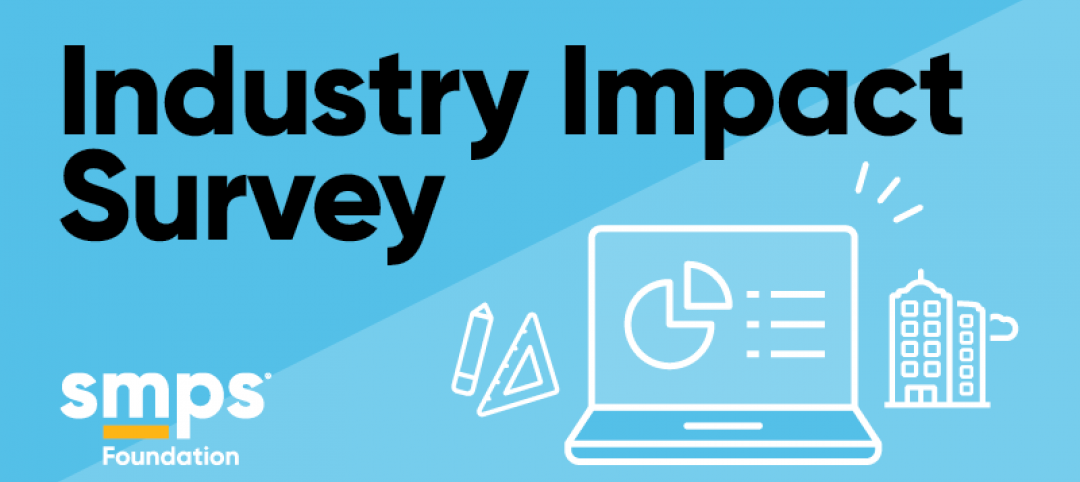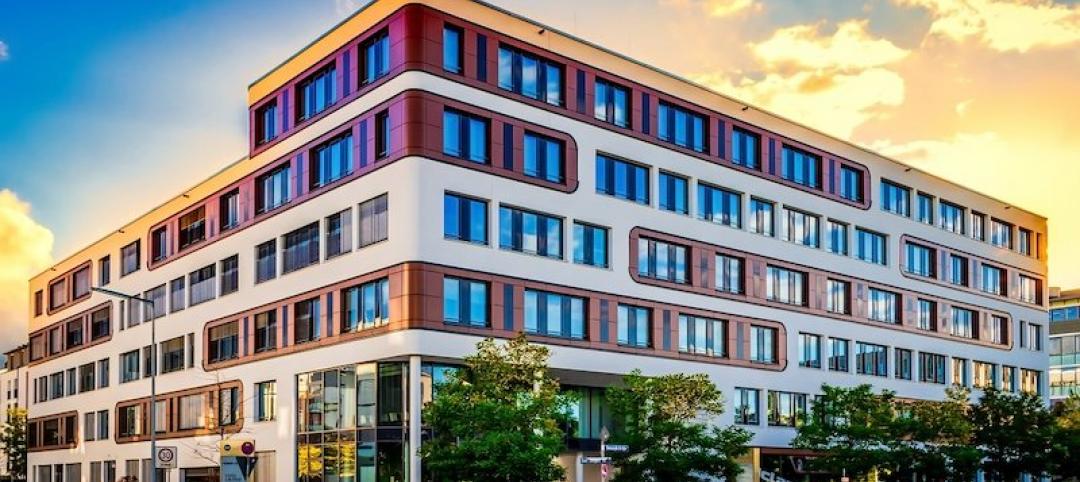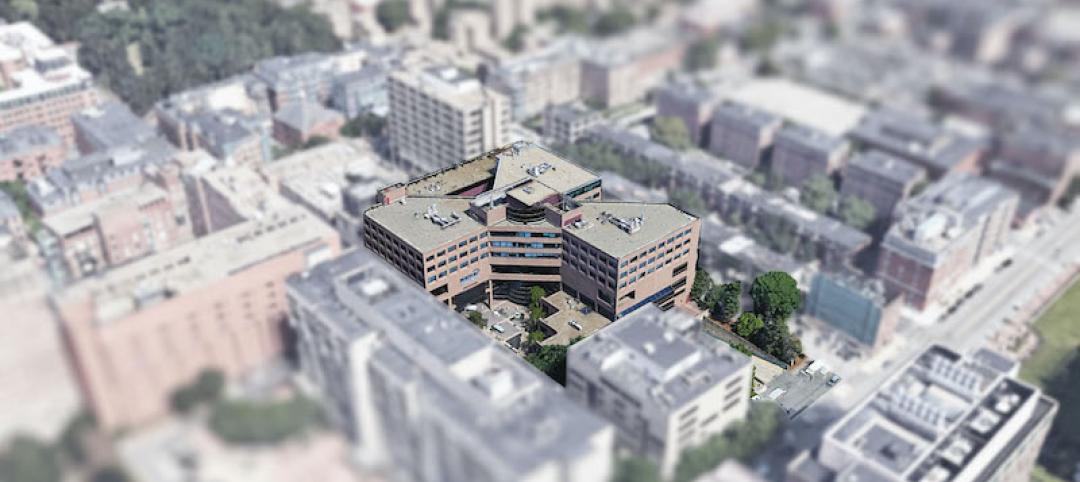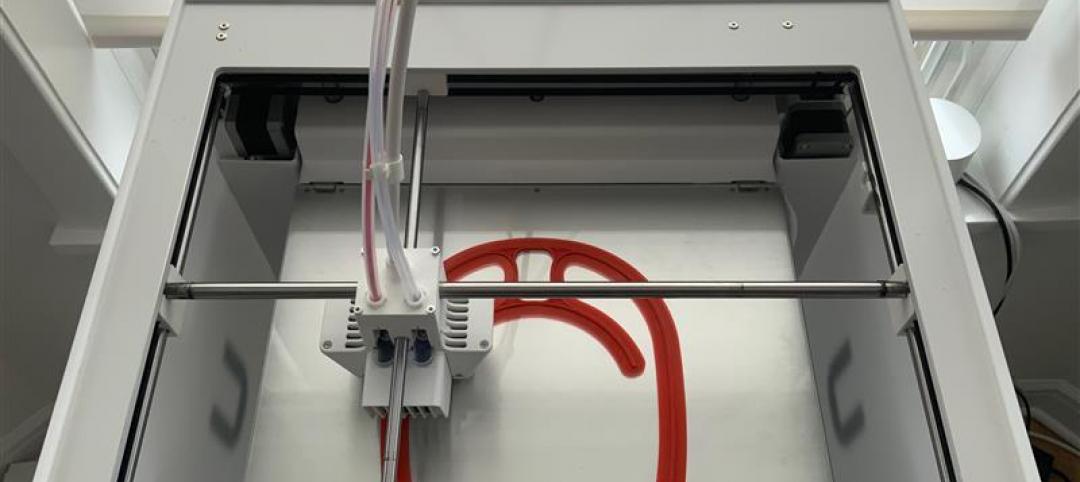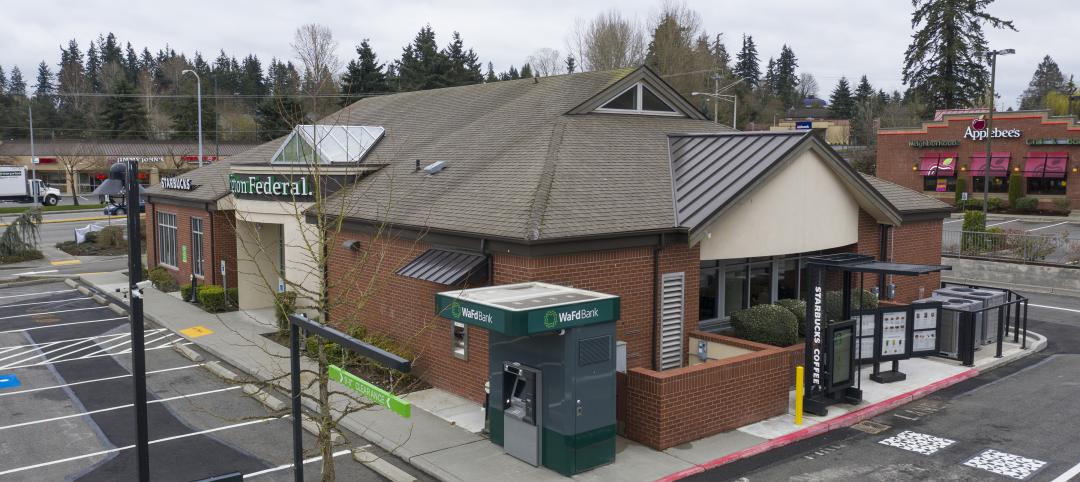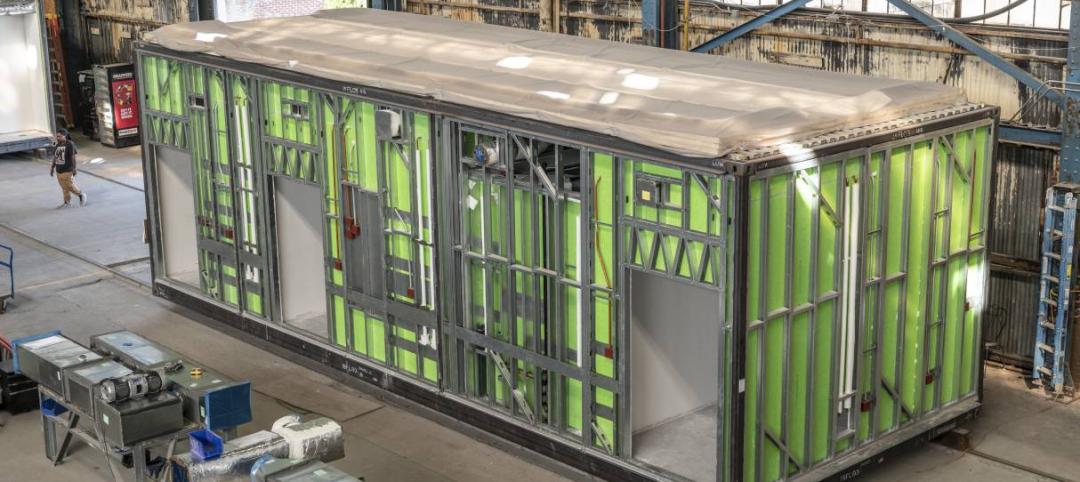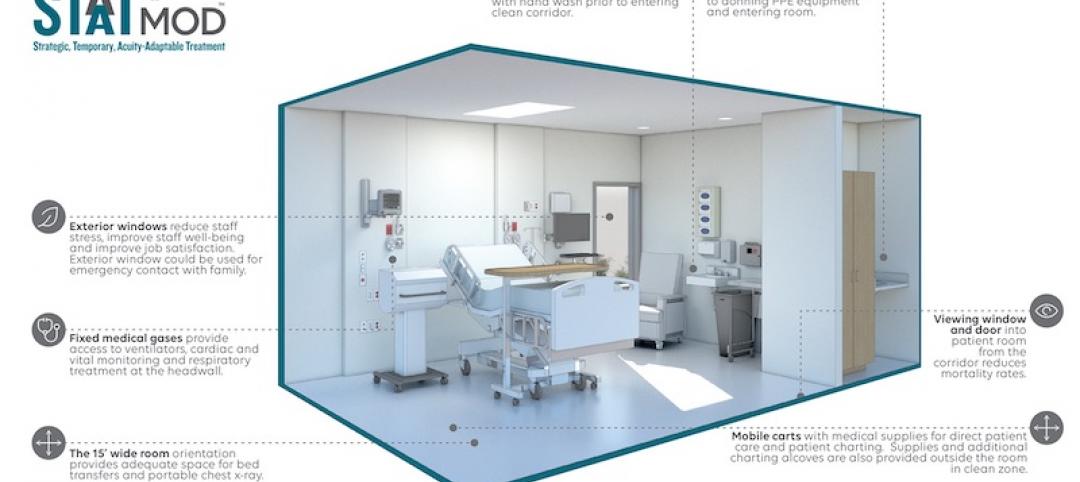As more is known about COVID-19, preventive measures continue to emerge and compete.
The engineering firm NV5, which provides third-party verification on WELL v2 projects for the Green Business Certification Institute, has been recommending to its clients Safe Traces, a solution that uses DNA-based sprays and sensors to verify engineering and HVAC controls for airborne contaminants. Its veriDART control verification uses “aerosol mobility indicators” to identify hotspots, assess ventilation and filtration, and inform remediations.
On January 15, the U.S. Environmental Protection Agency (EPA) announced approval of an emergency exemption request for the use of Grignard Pure, which claims to be the first-ever antimicrobial air treatment solution. Georgia and Tennessee were the first states granted exemptions to use Grignard Pure in certain indoor spaces. Another 17 states have expressed interest, according to Etienne Grignard, co-founder and CEO of Grignard Company in Rahway, N.J., whom BD+C interviewed in February.
“There’s no limit to where we can use it. The issue is just scaling the equipment to the system to which it is being deployed,” declares Mitchel Simpler, PE, FACEP, a Partner with Jaros, Baum & Bolles (JB&B), one of four engineering firms—the others being STV, ME Engineers, and Cosentini Associates—that comprise Grignard Pure’s engineering steering committee.
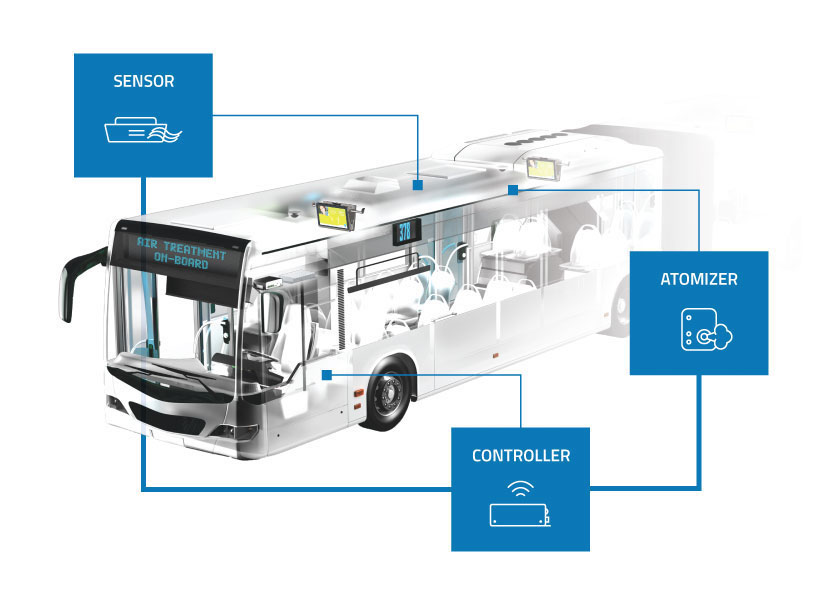
Grignard Pure has worked with Luminator Technology to devise an air treatment system for mass transit, which has already been tested on trains moving through several states. Courtesy of Grignard Pure
Simpler introduced Grignard to Dr. William Esposito, Founder of the Ambient Group and a leading industrial hygienist, who was an early proponent about the airborne transmission of COVID-19. “He convinced me that Grignard Pure is for real,” says Simpler. Esposito is part of Grignard Pure’s senior advisory leadership, along with William Jordan, the former deputy director of EPA’s pesticide programs.
Grignard Pure’s arrival
To say that Grignard Pure’s arrival was theatrical is no exaggeration.
Back in 2000, lighting equipment manufacturers requested a health and safety assessment of a product Grignard made that they were using to create haze and fog during concerts and plays. Grignard determined that four of the product’s ingredients, including triethylene glycol (TEG), were safe to breathe.
Fast forward 15 years: Grignard’s chemists discovered that TEG—a colorless, viscous liquid that is the active ingredient in Grignard Pure—had demonstrated efficacy against viruses. The company sought EPA approval to use it for virus deactivation, but EPA at the time wasn’t disposed to creating an entirely new category for antivirus antimicrobials. The approval request got shelved until the coronavirus hit the U.S. in 2020, at which point, Grignard began working with Microchem Laboratories to develop protocols for using this formula.
JB&B conducted proof-of-concept engineering assessments by distributing Grignard Pure through existing HVAC systems at two sites: Cincinnati’s Great American Ball Park, where the solution was applied to the owner’s suite; and the 1,700-seat New Amsterdam Theater in New York, where the test ran for two weeks. These tests demonstrated that, in an aerosolized microdroplet state, Grignard Pure behaves like a gas in its ability to distribute, dilute, and disperse in an atmosphere of occupied spaces.
Grignard Company eventually had the testing and efficacy data to prove that Grignard Pure could deactivate more than 98% of the COVID-19 strain in less than one minute. It reapplied for EPA approval in April 2020.
Last February, Jordan and Jack Caravanos, Clinical Professor of Environmental Health Sciences at New York University’s School of Global Public Health, posted a 75-page paper that provides a detailed assessment of Grignard Pure’s safety. (Caravanos sits on Grignard Pure’s seven-person science advisory team.)
Simpler and Grignard state that the federal government has shown interest in Grignard Pure for use in mass transit. Grignard Company partnered with Luminator Technology Group to develop an airborne intervention system (vimeo.com/443217817) that uses atomizers and sensors to dispense Grignard Pure into the atmospheres of buses and trains. The sensors monitor capacity and conditions of the vehicle and adjust the air treatment accordingly. The system coordinates with on-board displays and audio announcements.
Grignard says he’s most proud of the role his company played in creating a new category for assessing antivirus antimicrobials. EPA invited JB&B and Grignard Company to assist the agency in establishing protocols for testing anti-virus products. “A year from now, I hope we’re talking about how we helped bring back some normalcy to the world.”
Related Stories
Coronavirus | Apr 15, 2020
How has your work been impacted by COVID-19?
The SMPS Foundation and Building Design+Construction are studying the impact of the coronavirus pandemic on the ability to attain and retain clients and conduct projects, along with other consequences.
Coronavirus | Apr 15, 2020
COVID-19 alert: 93% of renters in professionally managed multifamily housing paid some or all of their rent, says NMHC
In its second survey of 11.5 million units of professionally managed apartment units across the country, the National Multifamily Housing Council (NMHC) found that 84% of apartment households made a full or partial rent payment by April 12, up 15 percentage points from April 5.
Coronavirus | Apr 15, 2020
DCAMM teams with SLAM and Gilbane Building Company to re-occupy Newton Pavilion for temporary quarantine of homeless during COVID-19 pandemic
First and only quarantine shelter in Boston-area to convert a shuttered hospital for homeless patient occupancy.
Coronavirus | Apr 15, 2020
3D printing finds its groove fabricating face shields during COVID-19 crisis
The architecture firm Krueck + Sexton is producing 100 shields for a Chicago-area hospital.
Coronavirus | Apr 14, 2020
COVID-19 alert: Missouri’s first Alternate Care Facility ready for coronavirus patients
Missouri’s first Alternate Care Facility ready for coronavirus patients
Coronavirus | Apr 13, 2020
COVID-19 alert: City conducts a 'virtual building inspection' to allow Starbucks and bank to open
Bothell, Wash., issues a certificate of occupancy to developer after inspecting the property online.
Coronavirus | Apr 13, 2020
Construction layoffs spread rapidly as coronavirus shuts down projects, in contrast to job gains through February in most metros
Association officials urge quick enactment of infrastructure investment, relief for hard-hit firms and pensions in order to save jobs in construction and supplier industries.
Coronavirus | Apr 12, 2020
How prefab can enable the design and construction industry to bring much needed beds to hospitals, faster
The outbreak of COVID-19 represents an unprecedented test for the global healthcare system. Managing the pandemic—and saving lives—depends largely on the availability of medical supplies, including the capacity of hospitals. But the United States lags behind other nations, with only 2.8 beds per thousand people compared to 4.3 in China and 12.8 in South Korea.
Coronavirus | Apr 10, 2020
HGA and The Boldt Company devise a prefabricated temporary hospital to manage surge capacity during a viral crisis
A STAAT Mod system can be ready to receive patients in less than a month.
Coronavirus | Apr 10, 2020
COVID-19: Converting existing hospitals, hotels, convention centers, and other alternate care sites for coronavirus patients
COVID-19: Converting existing unused or underused hospitals, hotels, convention centers, and other alternate care sites for coronavirus patients


